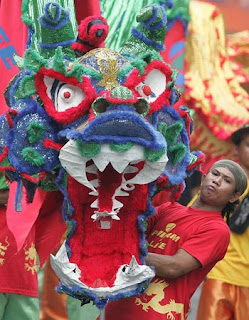Chinese New Year or Spring Festival is the most important of the traditional Chinese
holidays. It is sometimes called the Lunar New Year, especially by
people outside China. The festival traditionally begins on the first day
of the first lunar month in the Chinese calendar and ends on the 15th; this day is called Lantern Festival. Chinese New Year’s Eve is known as Chúx?. It literally means “Year-pass Eve”.

Celebrated in areas with large populations of ethnic Chinese, Chinese New Year is considered a major holiday for the Chinese and has had influence on the new year celebrations of its geographic neighbours, as well as cultures with whom the Chinese
have had extensive interaction. These include Taiwanese, Koreans,
Mongolians, Nepalese, Bhutanese, Vietnamese, and formerly the Japanese
before 1873. In Singapore, Indonesia, Malaysia, the Philippines, Thailand, and other countries with significant Chinese populations, Chinese New Year is also celebrated, largely by overseas Chinese, and has, to varying degrees, become part of the traditional culture of these countries. In Canada, although Chinese New Year is not an official holiday, many ethnic Chinese hold large celebrations and Canada Post issues New Year’s themed stamps in domestic and international rates.

Although the Chinese calendar traditionally did not use continuously
numbered years, its years are now often numbered from the reign of
Huangdi outside China. But at least three different years numbered 1 are
now used by various writers, causing the year beginning in 2008 to be
4706, 4705, or 4645.

According to tales and legends, the beginning of Chinese New Year started with the fight against a mythical beast called the Nian or “Year” in Chinese.
Nian would come on the first day of New Year to devour livestock,
crops, and even villagers, especially children. To protect themselves,
the villagers would put food in front of their doors at the beginning of
every year and believed that after the Nian ate the food they prepared,
it wouldn’t attack any more people. Once, people saw the Nian was
scared away by a little child wearing red, they then understood that the
Nian was afraid of color red. Hence, every time when New Year was about
to come, the villagers would hang red lanterns and spring scroll on windows and doors.
People also used firecrackers to frighten the Nian and from then on,
the Nian never came to the village again and was eventually converted by
Hongjunlaozu, a Taoist in the old time, and became his mount.


No comments:
Post a Comment